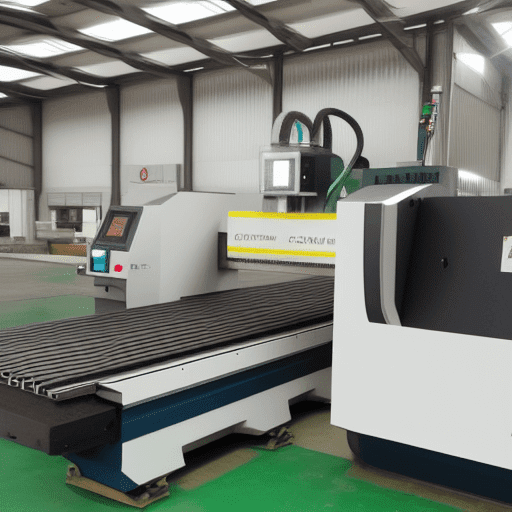CNC (Computer Numerical Control) machining is generally considered to be more accurate than manual machining. This is because CNC machines are programmed with precise instructions that are followed to the letter, meaning that the same part can be replicated with a high degree of accuracy. Manual machining, on the other hand, relies on the skill and experience of the machinist to produce parts that are accurate and consistent. While a skilled machinist can produce parts that are very accurate, the degree of accuracy is not as consistent as with CNC machining. Additionally, CNC machines are able to produce parts with complex geometries that would be difficult or impossible to produce with manual machining. CNC machines are also able to produce parts with a high degree of repeatability, meaning that the same part can be replicated with a high degree of accuracy. This is especially important in industries where parts must be produced with a high degree of accuracy and consistency.
What are the three 3 limitations of a milling machine?
Milling machines have several limitations when compared to other machining tools. The three main limitations are:
1. Size: Milling machines are limited in size and power, meaning they are not suitable for large or heavy pieces of material. This limits the types of materials that can be machined and the complexity of the shapes that can be created.
2. Accuracy: Milling machines are not as accurate as other machining tools, such as lathes or CNC machines. This means that the parts produced may not be as precise as desired.
3. Speed: Milling machines are relatively slow compared to other machining tools. This means that it takes longer to produce parts, which can be a problem when working on tight deadlines.
Is a Bridgeport a good mill?
A Bridgeport mill is a great choice for a variety of machining operations. It is a versatile machine that can be used for a wide range of applications, from light-duty hobby work to heavy-duty industrial production. The Bridgeport mill is known for its durability and reliability, and is a popular choice among machinists and fabricators. It is also relatively easy to use and maintain, making it a great choice for those just starting out in machining.
The Bridgeport mill is a vertical mill, meaning that the spindle is mounted vertically and the table moves in the X, Y, and Z axes. This allows for a wide range of machining operations, including drilling, tapping, boring, and milling. The Bridgeport mill is also equipped with a quill feed, which allows for precise control of the cutting depth. The quill feed also allows for rapid tool changes, which can be a great time-saver.
How much weight can you put on a Bridgeport?
The amount of weight that can be put on a Bridgeport depends on several factors, including the type of Bridgeport, the size of the Bridgeport, and the type of material used to construct the Bridgeport. Generally speaking, a Bridgeport can support up to 10 tons of weight, but this can vary depending on the specific Bridgeport. For example, a Bridgeport made of steel can support more weight than one made of wood. Additionally, the size of the Bridgeport can also affect the amount of weight it can support. A larger Bridgeport can support more weight than a smaller one.
When determining how much weight a Bridgeport can support, it is important to consider the type of material used to construct the Bridgeport, the size of the Bridgeport, and the type of load that will be placed on the Bridgeport. Additionally, it is important to consider the environment in which the Bridgeport will be used. For example, a Bridgeport used in a wet environment may not be able to support as much weight as one used in a dry environment.
Can you mill wood on a Bridgeport?
Yes, you can mill wood on a Bridgeport. A Bridgeport is a type of milling machine, which is a machine tool used to shape solid materials such as metal, wood, and plastic. It is typically used to machine flat surfaces, but can also be used to machine complex shapes. The Bridgeport is a versatile machine that can be used for a variety of milling operations, including milling wood.
When milling wood on a Bridgeport, it is important to use the correct cutting tools and speeds. The cutting tools should be designed specifically for milling wood, and the speed should be adjusted to the type of wood being milled. It is also important to use the correct lubricants and coolants to ensure that the cutting tools do not become overheated and cause damage to the wood.
When milling wood on a Bridgeport, it is important to use the correct feeds and speeds. The feed rate should be adjusted to the type of wood being milled, and the speed should be adjusted to the type of cut being made.
